
Australian Journal of Language and Literacy
Scope & Guideline
Advancing the frontiers of language and literacy research.
Introduction
Aims and Scopes
- Interdisciplinary Approaches to Literacy Education:
The journal promotes research that integrates various disciplines, such as linguistics, education, and cultural studies, to provide comprehensive insights into literacy practices. - Focus on Multimodality and Multiliteracies:
A consistent emphasis on multimodal literacy recognizes the diverse ways in which people engage with texts and meaning-making in contemporary society. - Culturally Responsive Pedagogy:
Research exploring the importance of culturally relevant teaching and the inclusion of Indigenous and multicultural perspectives in literacy education is a hallmark of the journal. - Critical Literacy and Social Justice:
The journal encourages studies that address issues of power, identity, and representation in literacy education, aiming to foster critical consciousness among learners. - Practical Applications and Teacher Perspectives:
A strong focus on the experiences and insights of educators provides valuable context for the implementation of literacy practices in classrooms.
Trending and Emerging
- Plurilingual and Intercultural Pedagogies:
Recent publications highlight the importance of recognizing and incorporating students' diverse linguistic backgrounds and cultural contexts into literacy education, which is increasingly relevant in multicultural classrooms. - Digital Literacy and Citizenship:
With the rise of digital technologies, there is a growing emphasis on understanding digital literacy and its implications for citizenship, particularly in how young learners navigate online spaces. - Social Justice and Critical Literacy:
An increasing number of studies focus on social justice issues within literacy education, emphasizing the need for critical literacy practices that empower marginalized voices and challenge dominant narratives. - Multimodal Texts and Meaning-Making:
Research exploring how students engage with and create multimodal texts is gaining traction, reflecting the contemporary importance of diverse media and formats in literacy practices. - Teacher Agency and Professional Development:
Emerging themes emphasize the role of teacher agency in implementing effective literacy practices and the importance of ongoing professional development to adapt to changing educational landscapes.
Declining or Waning
- Traditional Literacy Assessment Methods:
As the focus on innovative and multimodal approaches to literacy grows, traditional assessments, particularly those that do not account for diverse literacies, are becoming less frequently discussed. - Phonics-Only Approaches:
Research centered solely on phonics instruction has seen a decline, as educators and researchers increasingly advocate for integrated and contextualized literacy practices. - Narrowly Defined Literacy Practices:
Studies that focus on specific, traditional definitions of literacy are waning, as the field moves toward broader and more inclusive interpretations of literacy that encompass various forms of communication and expression.
Similar Journals
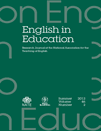
English in Education
Shaping Educational Discourse Through Language and LiteratureEnglish in Education, published by Taylor & Francis Ltd, is a premier journal dedicated to the broad field of education, with a specific focus on the interplay of language, literature, and pedagogy. Since its inception in 1964, this esteemed journal has become a vital resource for researchers, educators, and students alike, offering a platform for innovative research and scholarly discourse. With an impressive impact factor and categorized in the top quartiles of both Linguistics and Language, and Literature and Literary Theory, it ranks among the top journals in its field, denoting its significance and influence. The journal aims to advance understanding and practice in English education through rigorous peer-reviewed articles, theoretical explorations, and empirical studies that address contemporary challenges and developments in these intertwined disciplines. The journal’s commitment to excellence is reflected in its Scopus rankings, highlighting its critical role in fostering research that informs and enriches educational practices. Although currently not open access, English in Education remains an essential outlet for professionals seeking to contribute to the evolving landscape of English language and literature education.
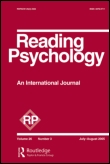
Reading Psychology
Advancing Insights into Reading and CognitionReading Psychology, published by Routledge Journals, Taylor & Francis Ltd, is an esteemed journal dedicated to exploring the multifaceted relationship between reading processes and psychological principles. Since its establishment in 1979, this journal has provided a crucial platform for researchers, educators, and psychologists, addressing pivotal themes in Developmental and Educational Psychology, Education, and Linguistics and Language. With a commendable impact factor and a robust ranking within Scopus across multiple categories, including Q1 in Linguistics and Language, Reading Psychology plays an indispensable role in advancing scholarly discourse. Although it currently does not provide Open Access options, it remains a vital source of innovative research that informs theory and practice. The journal aims to cultivate a deeper understanding of reading behaviors, foster interdisciplinary collaboration, and ultimately enhance educational techniques, making it essential reading for anyone committed to the study of reading and cognition.

Language and Literacy
Illuminating Pathways to Enhanced Literacy OutcomesLanguage and Literacy is an esteemed journal published by LANGUAGE & LITERACY RESEARCHERS CANADA, focusing on the vital intersections of language acquisition and literacy development. With a commitment to open access since 1999, this journal provides a platform for researchers and practitioners to share innovative findings and pedagogical insights that enhance the understanding of language and literacy in various educational contexts. The journal aims to foster a dialogue among educators, researchers, and policy makers by disseminating high-quality research and facilitating discussions on best practices. Recognized for its contributions to the field, Language and Literacy serves as an indispensable resource for those dedicated to improving literacy outcomes and language education globally. Based in Victoria, BC, Canada, it invites submissions that explore theoretical frameworks, empirical studies, and applied research, thereby enriching the academic community’s knowledge base.
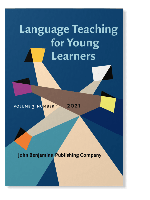
Language Teaching for Young Learners
Advancing research to nurture language skills in children.Language Teaching for Young Learners, published by John Benjamins Publishing Co, is a premier journal dedicated to enhancing the pedagogy of language acquisition in early childhood education. Since its inception in 2019, it has rapidly established itself within the research community, reflected by its high Scopus rankings—placing it in the 85th percentile for Language and Linguistics and the 84th percentile for Education. The journal aims to provide a platform for innovative research, practical insights, and theoretical discussions surrounding the teaching of languages to young learners, thus contributing significantly to the fields of Education and Linguistics. With an open access model currently unavailable, it caters to a diverse global audience, including researchers, educators, and policy-makers, keen on improving pedagogical practices. Located in the Netherlands, the journal's commitment to academic excellence is evident through its Q1 and Q2 rankings in Linguistics and Language and Education respectively, encouraging continual discourse in cultivating effective language education practices.

TESL Canada Journal
Elevating ESL Pedagogy with Groundbreaking ResearchTESL Canada Journal, published by TESL Canada, serves as a vital resource for researchers, educators, and practitioners in the field of English as a Second Language (ESL) and applied linguistics. With its commitment to advancing scholarship and best practices in language education, this esteemed journal fosters a platform for the dissemination of high-quality research and innovative pedagogical approaches. Although it operates without open access, its comprehensive articles and reviews offer valuable insights into current trends and challenges faced by ESL educators across Canada and internationally. The journal is dedicated to promoting a deeper understanding of language acquisition processes and instructional methodologies, contributing significantly to the professional development of its readership. Located in Burnaby, Canada, the journal aims to bridge the gap between theory and practice, making it an indispensable source for educators and researchers looking to enhance their expertise in ESL education.
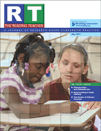
READING TEACHER
Transforming language learning through research and practice.READING TEACHER is a premier journal dedicated to the field of literacy and language education, published by Wiley. With a robust impact factor and a distinguished Q1 ranking in Linguistics and Language, this highly regarded journal serves as an essential resource for educators, researchers, and students aiming to enhance reading instruction and literacy development. The journal covers a broad range of topics within the domain of language and literacy, offering insights into innovative teaching methodologies, research on reading behaviors, and best practices for educational engagement. As the field continues to evolve, READING TEACHER remains committed to advancing scholarship through rigorous peer-reviewed research. Researchers and practitioners can access articles from the journal to stay updated on the latest findings and trends shaping literacy education. For those engaged in the critical study of language acquisition and reading instruction, READING TEACHER is an invaluable part of their academic journey.
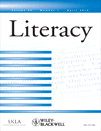
Literacy
Unpacking the Sociocultural Dimensions of Language UseLiteracy is a premier academic journal published by Wiley, focusing on critical advancements and research in the fields of education and linguistics. With an impressive impact factor reflected in its Q2 ranking in Education and Q1 in Linguistics and Language, this journal serves as a vital platform for researchers, educators, and students seeking to explore contemporary issues surrounding literacy in diverse contexts. Since its inception in 2005, Literacy has made significant contributions to understanding the evolving nature of literacy practices, promoting dialogue on innovative pedagogies and the sociocultural implications of language use. While it is not an Open Access journal, its accessibility through institutional subscriptions ensures that its valuable insights reach a broad audience. With its robust Scopus rankings, including an 88th percentile in Language and Linguistics and 63rd in Education, Literacy remains an indispensable resource for those committed to advancing literacy education and research.

GEMA Online Journal of Language Studies
Innovating Understanding in Linguistics and Beyond.GEMA Online Journal of Language Studies, published by Penerbit Universiti Kebangsaan Malaysia, is a prominent open-access journal dedicated to advancing research in the fields of Linguistics, Language, and Literature. Since its inception in 2001, the journal has been committed to providing a platform for scholarly articles that push the boundaries of knowledge and foster dialogue among professionals, researchers, and students alike. With its impressive impact reflected in the 2023 Q1 category rankings in both Linguistics and Language as well as Literature and Literary Theory, GEMA has established itself as a leading authority, achieving a notable rank of #17/1106 in its fields on Scopus, reflecting its high percentile of 98. The journal spans an extensive range of topics relevant to language studies, emphasizing integration and innovation from 2009 to 2024. Researchers looking to disseminate their findings or keep abreast of the latest developments will find GEMA an invaluable resource in the pursuit of academic excellence and a deeper understanding of language dynamics.

Journal of Early Childhood Literacy
Illuminating Pathways to Literacy SuccessJournal of Early Childhood Literacy, published by SAGE PUBLICATIONS LTD, is a leading international journal dedicated to the exploration and dissemination of research in the field of early childhood literacy. With a robust impact factor and a distinguished ranking in the Q1 category of Education, this journal is at the forefront of publishing innovative studies and theoretical frameworks that shape literacy practices and policies for young learners. Operating from its base in the United Kingdom, it serves as a crucial platform for researchers, educators, and practitioners alike, providing insights into literacy development, pedagogical strategies, and the socio-cultural contexts affecting literacy acquisition. Researchers can access a wealth of articles that reflect the journal’s commitment to advancing knowledge and understanding in early childhood literacy, making it an essential resource for anyone dedicated to fostering literacy in the formative years. The journal has consistently maintained a strong reputation, ranking in the top 82nd percentile among its peers in Social Sciences - Education according to Scopus metrics. Engage with the vibrant discourse and contribute to the evolving landscape of early literacy by exploring the latest findings published in the Journal of Early Childhood Literacy.
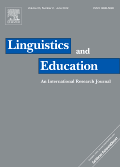
Linguistics and Education
Unlocking the Power of Language in Educational SettingsLinguistics and Education, published by Elsevier, is a premier journal dedicated to advancing the understanding of the intersections between linguistics and educational practices. With its ISSN 0898-5898 and E-ISSN 1873-1864, this journal has established itself as a significant platform since its inception in 1988, continuing to produce impactful research up to 2024. It enjoys a prestigious Q1 ranking in both the Education and Linguistics and Language categories, reflecting its high-quality contributions and leading role in the field. The journal’s Scopus rankings further underscore its influence, being placed in the 87th percentile for Arts and Humanities in Language and Linguistics, and the 86th percentile in Social Sciences in Linguistics and Language. Although it operates under traditional subscription access, its contributions are essential for researchers, professionals, and students alike, making substantial strides in the understanding of language, learning environments, and pedagogical strategies. The journal's objective is to foster interdisciplinary dialogue and disseminate innovative research that informs educational policy and practice.